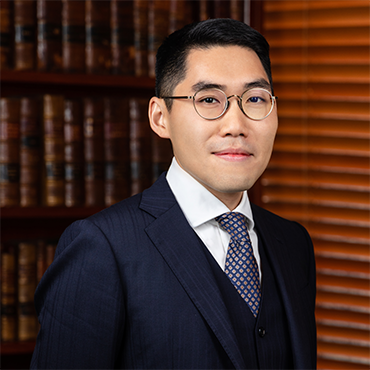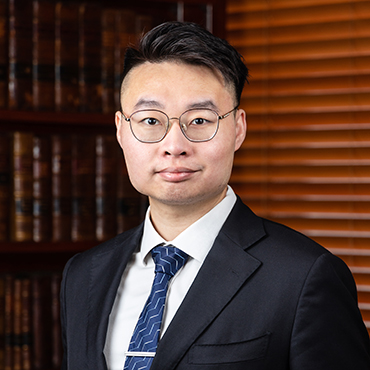Au Din Har Ellen (區殿霞) v Au Yee Wan (區綺雲) [2024] 1 HKLRD 825, [2024] HKCFI 199 (Jeff Yau, Cyrus Lau)
Jeff Yau and Cyrus Lau represented the plaintiff in Au Din Har Ellen (區殿霞) v Au Yee Wan (區綺雲) [2024] 1 HKLRD 825, [2024] HKCFI 199.
In P’s action against D1-5, D3-5 filed an acknowledgment of service of the writ. On the same day that D4-5 filed their respective defences, D3 took out a summons to strike out P’s claim insofar as it related to D3. Subsequently, P’s solicitors wrote to D3-5’s solicitors indicating P’s intention to wholly discontinue the action. P issued a notice of discontinuance to all Ds. However, D3-5’s solicitors wrote to P’s solicitors stating that P could not unilaterally discontinue the action without leave, and D3-5 continued to take steps in the action by, for example, seeking further and better particulars and discovery. This prompted P to take out a summons seeking leave to continue to discontinue the action against D3-5 which D3-5 opposed, insisting on striking out P’s claim instead. The Master gave leave to P to discontinue the action, and ordered that P pay the costs of the action, the discontinuance summons and D3’s striking out summons on an indemnity basis. P appealed against the Master’s order. On appeal, it was agreed that P was entitled to discontinue the action without leave as the time for D3 to file his defence had not yet expired when P issued the notice of discontinuance, pursuant to O.21 r.2(1) and 2(3) of the Rules of the High Court (Cap.4A, Sub.Leg.) (the RHC). However, D3-5 argued that on an objective view of the facts, P had abandoned the notice of discontinuance, and D3-5 had consented to such a course of action. D3-5 contended that by, inter alia, taking out the discontinuance summons without any qualification and pursuing the same, P was estopped either by representation or by convention from arguing that the notice of discontinuance had not been withdrawn by consent or was otherwise still effective; the parties must have had a shared common assumption that the Master had jurisdiction to deal with P’s application for leave to discontinue the action, so that the jurisdiction was conferred on the Master by consent.
Held, allowing the appeal and setting aside the Master’s order, that:
- (1) Even assuming that the parties could “revive” the action by consent, the evidence did not support that such consent was given or that P was estopped from denying that the notice of discontinuance had been withdrawn by consent. In order for a common assumption to give rise to an estoppel by convention, it had to be sufficiently certain to enable the court to give effect to it; in order for there to be an estoppel by representation, the representation had to be clear and unequivocal. Here, the starting point was that P never stated that the notice of discontinuance was being withdrawn or was of no effect. On the contrary, P’s position was that she should be allowed to discontinue the action. Just because the discontinuance summons was entertained by the Master, it did not mean that the parties had accepted that the Master had jurisdiction to deal with the matter on the basis that the notice of discontinuance had been withdrawn. It was not a necessary assumption that the parties had acted logically or on a correct understanding of the law. On an objective view of events, P’s conduct could not be said to be consistent only with a stance of having abandoned the notice of discontinuance. It was equally, if not more consistent, with P’s acting without regard to whether there might be any inconsistency between the notice of discontinuance and the discontinuance summons (Unruh v Seeberger (2007) 10 HKCFAR 31 applied; Champion Concord Ltd v Lau Koon Foo (No 2) (2011) 14 HKCFAR 837 distinguished). (See paras.28-33.)
- (2) There being no estoppel, leave was not required for discontinuing the action. By virtue of O.62 r.10(1) and 10(5) of the RHC, an order for the costs of the action was deemed to have been made in favour of each of D3-5 at the time of service of the notice of discontinuance on each of them. The Master’s order should be set aside. (See para.34.)
- (3) As for the costs orders to be made in respect of the period after the service of notice of discontinuance on D3-5, P had discontinued her action without leave as she was entitled to. However, D3-5 did not accept this but took steps, perversely, to keep the action alive and to pursue D3’s striking out summons. P then compounded the procedural muddle by taking out the discontinuance summons, which was now admitted as being misconceived, and the consequence of which it had had to come to court to rectify. In all the circumstances, the fairest order was both sides to bear the costs of the steps which they had taken. (See paras.35, 38.)
[The above is excerpted from the headnote to the report in HKLRD.]



